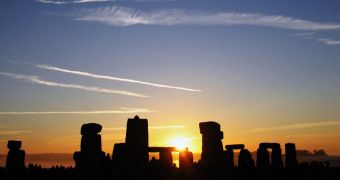Researchers at the University of Salford and the University of Huddersfield managed to conduct an interesting study of the ancient ruins of Stonehenge, in which they determined the acoustical “impulse response” the structure has.
Trevor Cox, a researcher at the University of Salford, collaborated with colleagues Bruno Fazenda, and Rupert Till from the University of Huddersfield, in carrying out the research.
The scientists are all acoustics experts, and they were trying to determine how the monument was responding to various types of acoustical signals.
The work is important for determining how the old edifice may have sounded like to the people who built it, NewScientist reports.
There are currently numerous controversies surrounding when, how and why Stonehenge was built, and the results of the new investigation may help us establish its history once and for all.
In order to calculate the structure's impulse response, the scientists set up a fairly simple experiment, in which they popped balloons several meters away from a sensitive microphone.
The instrument recorded all the sounds that the balloon made as it exploded, including a direct signal and all related reflections.
On the audio chart for the experiment, the original signal – a balloon popping – is heard distinctly, and is marked by by a peak. All other secondary reflections are then recorded as smaller peaks.
This approach creates a relatively straightforward plot of how the sound travels through the ruins. The recordings contained the direct signals, and all the reflections that were produced as the sound bounced off nearby stones.
Once back in the lab, the researchers could use this data to extrapolate how songs and other noises may have sounded like in Stonehenge all those millennia ago.
The acoustic experts explain that they used a mathematical function known as convulsion to combine an anechoic recording (containing no sound reflections) with the monument's impulse response.
It was found that Stonehenge tends to take the treble section of the sound down a notch, living only a deeper sound, which contained more bass.
This means that songs or drums heard at the site would have sounded more ceremonial, and would have most likely instilled respect in those in attendance.

 14 DAY TRIAL //
14 DAY TRIAL //